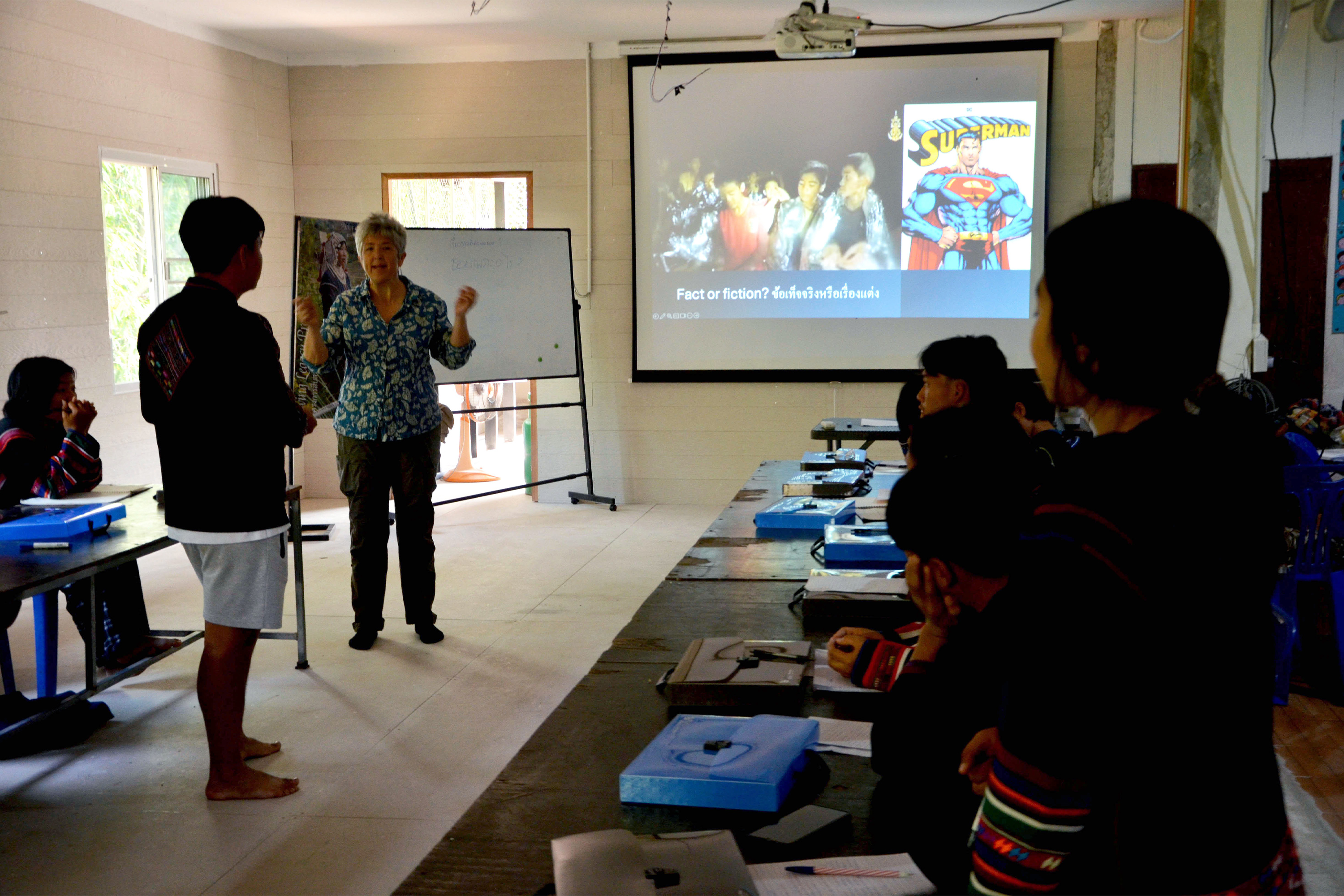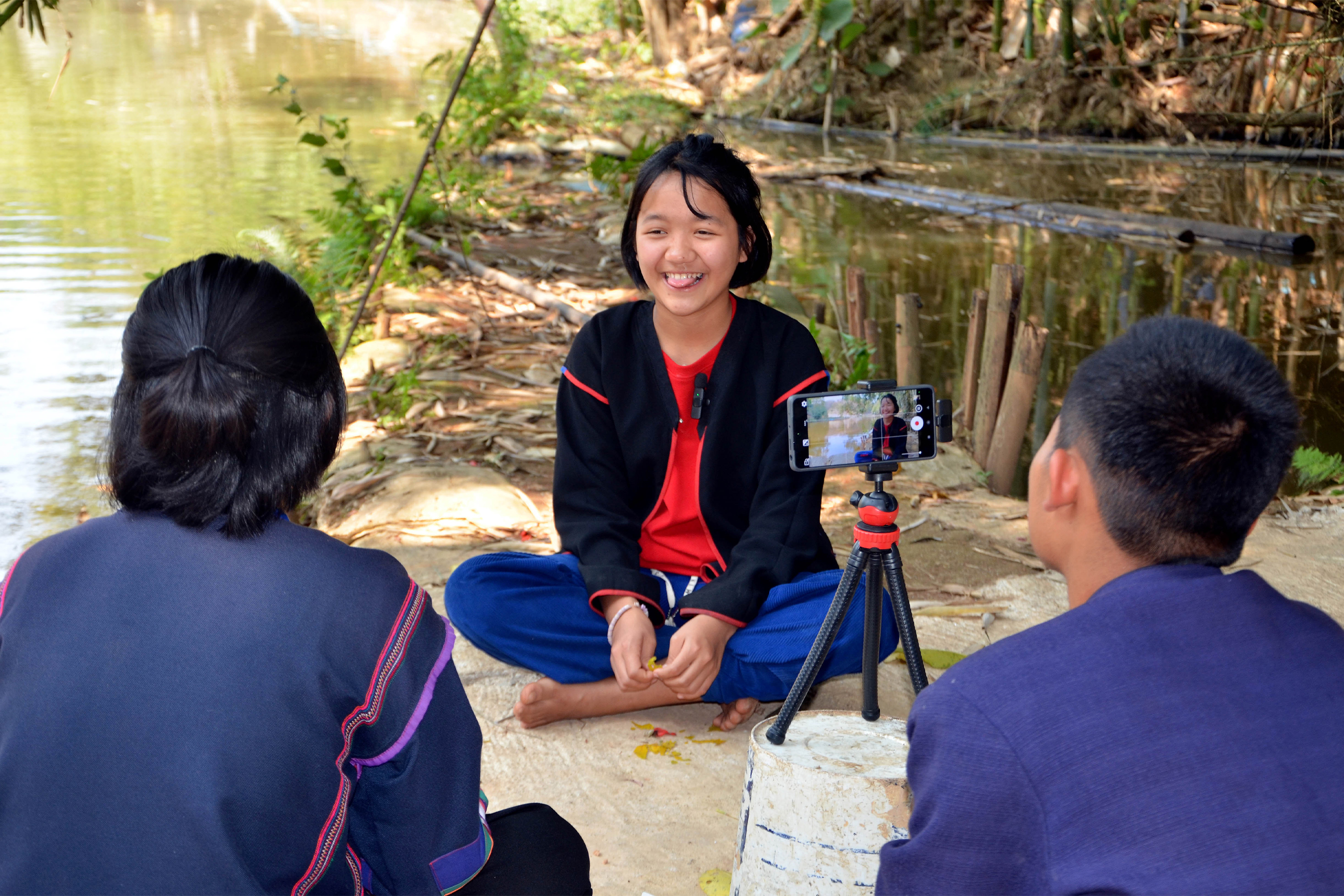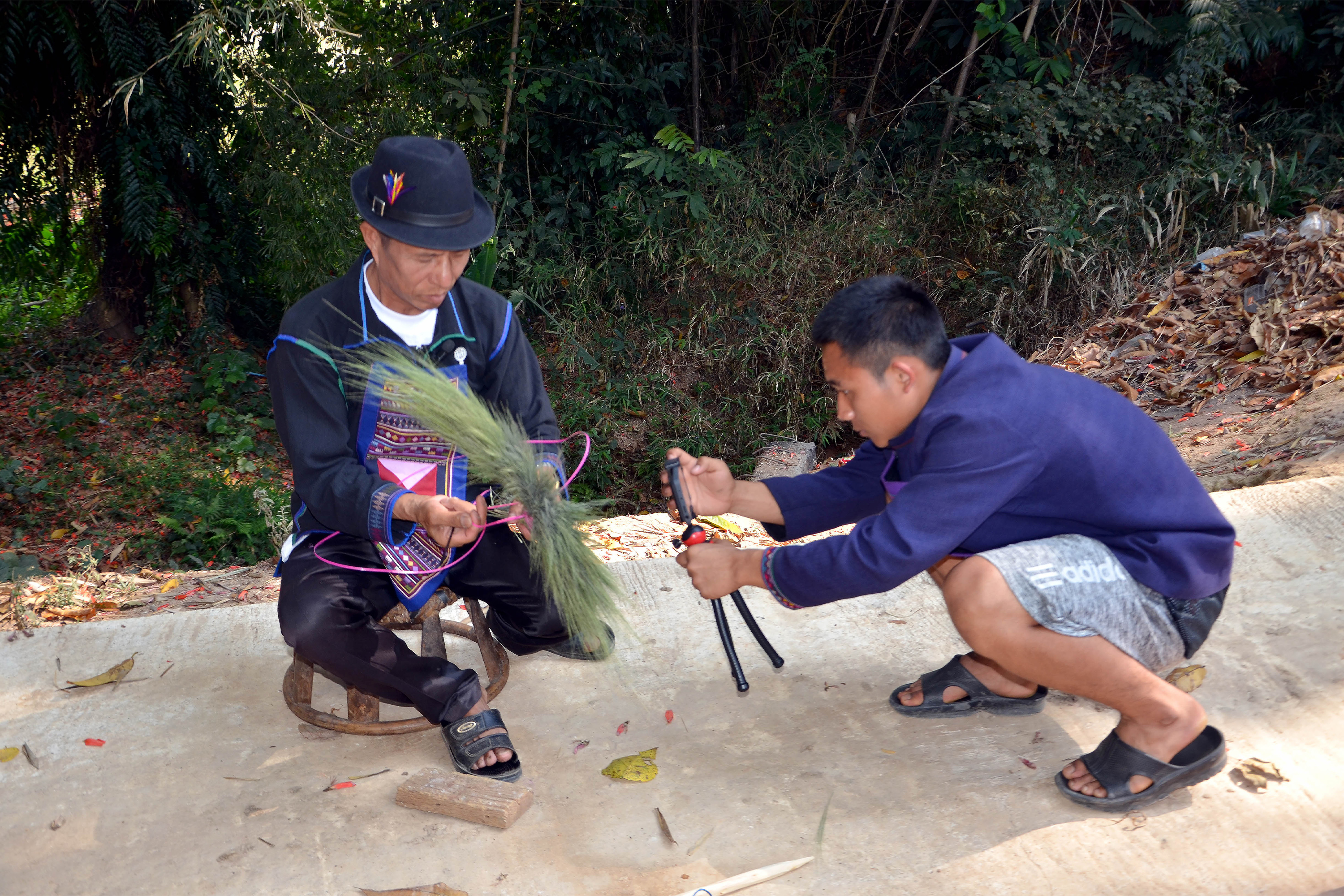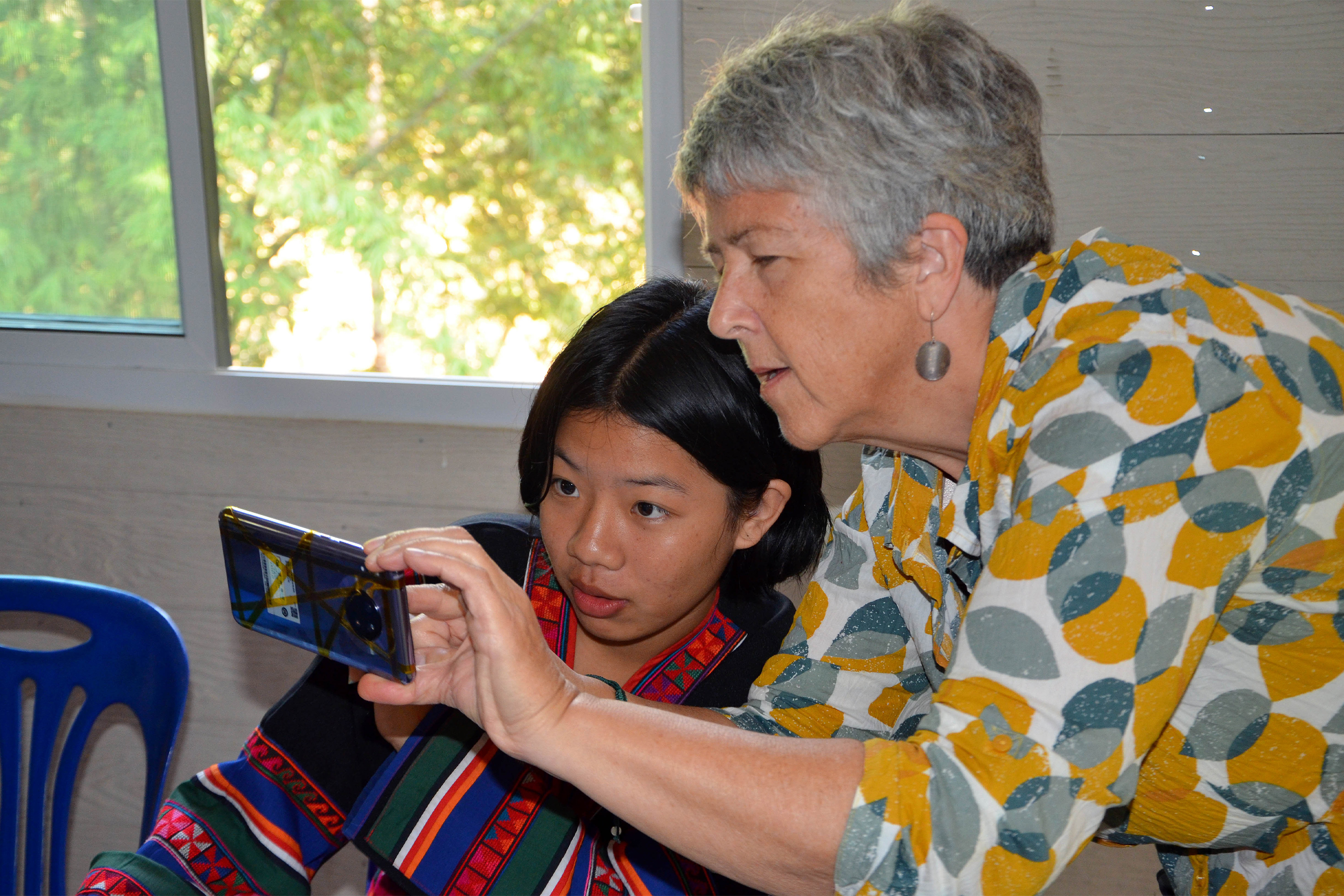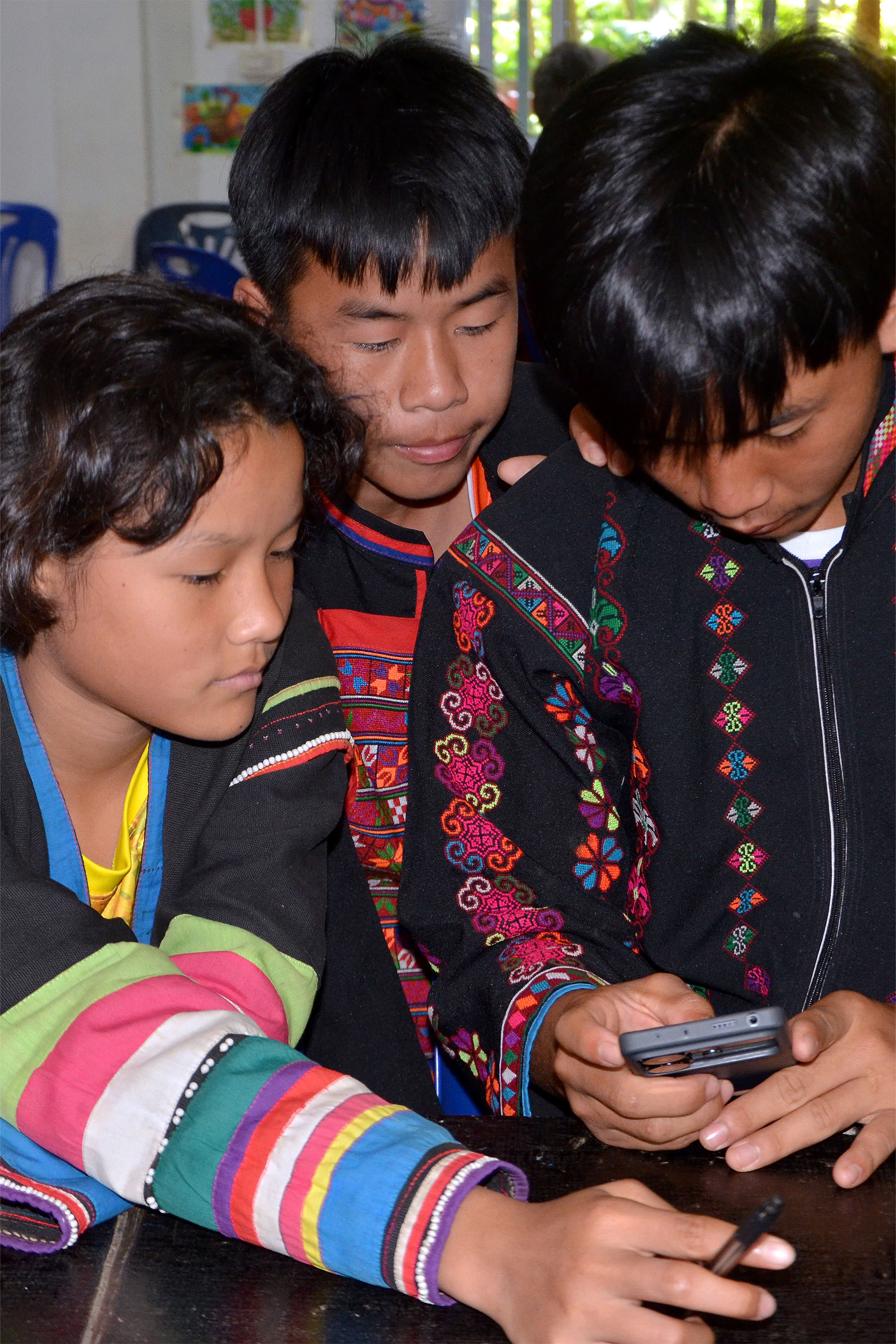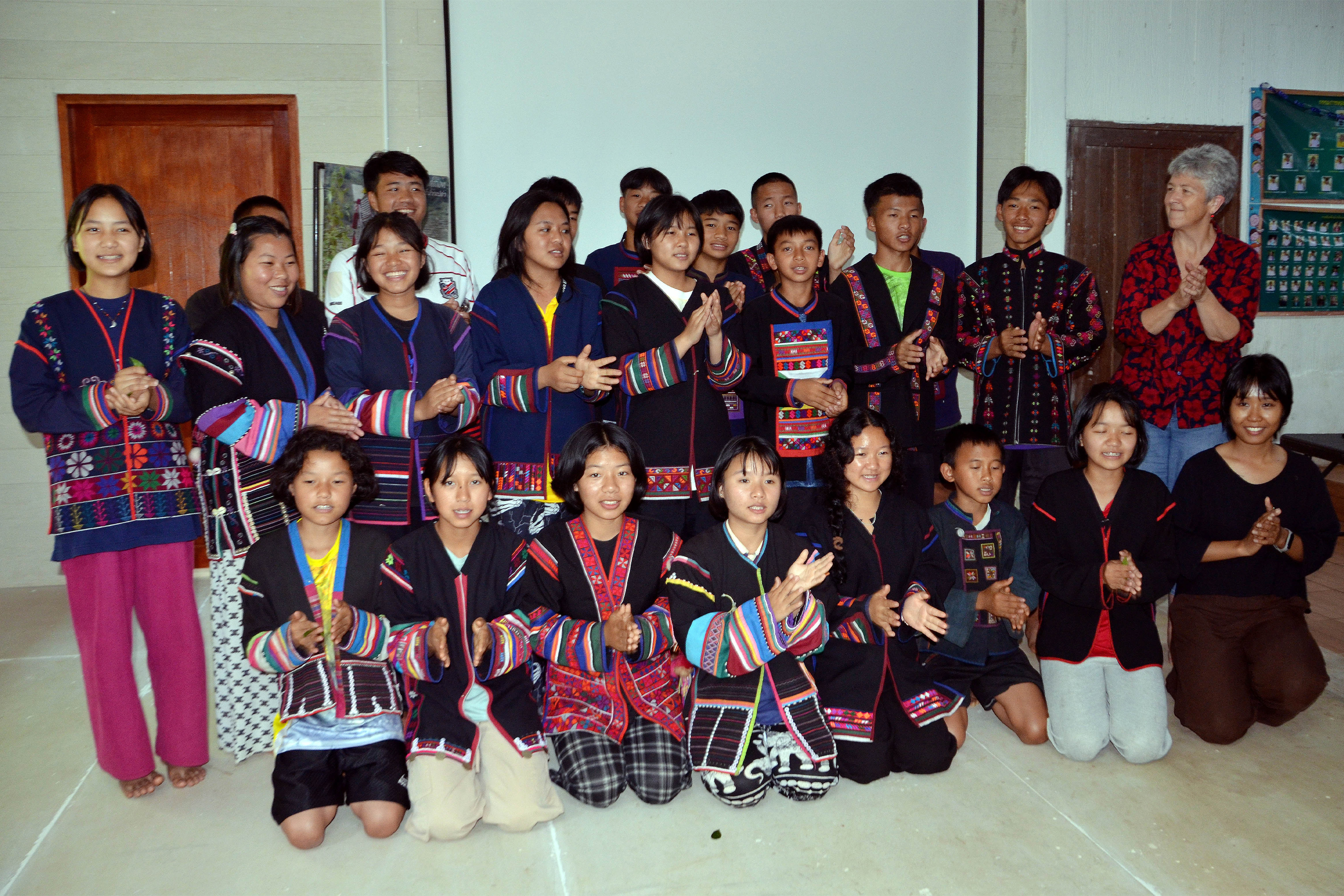Digital Storytelling Course
The Living Legacy Project's commitment to sustain intangible heritage and champion the Akha Oral Tradition School in Ban Saen Suk is founded on a multi-faceted approach, adding experiential training in fields beyond music in order to expand the Akha students' understanding of their own heritage, and to foster their desire to protect it for future generations. This plan of action takes many forms, one of which is through Audio-Video Documentation.
Digital Storytelling Course
Led by Clare Lyons
Cultural Crossroads Asia was thrilled to welcome Clare Lyons, a former senior producer and reporter for BBC World News and a specialized trainer, to teach an intensive Digital Storytelling Course to our Akha students in Ban Saen Suk.
Over five days in February and March 2025, the workshop focused on the principal aspects of photo and video reporting—mobile phone skills, documentation and organization, vocal presentation skills, and visual storytelling—with the intention that each of six student teams would, in the end, complete a four-minute video. What an extraordinary challenge was put to these young people. . .
The Power of Storytelling
By screening examples of compelling short videos from around the world, Clare introduced the notion that films have the mighty power to move viewers in myriad ways: inspiring, informing, connecting, rallying, entertaining, and, importantly, stirring deep emotions.
A beautiful case in point is the short video, "Not All Superheroes Wear Capes," that she showed, which recounts the perilous saga of the 'Thai Cave Boys,' known as the Wild Boars, who escaped after spending three weeks trapped in the Tham Luang Cave.
First Phone Experience!
The magical moment arrived at last when students had their first hands-on experience with their newly acquired Smart Phones, funded by Cultural Crossroads Asia and generous sponsors.
Seeing as the majority of students had never before owned a phone, this opened up an extraordinary world of possibilities. It was sheer delight to behold their unbridled enthusiasm as they filmed everything and everyone around them.
Five Shot Sequence
This led to further lessons in filming interesting angles based on the principle of a "Five Shot Sequence" — mixing a string of shots: close-up, mid-range, wide, above, below, and over the shoulder – to captivate a viewer's imagination.
Again, the children were let loose in teams to gather a variety of shots, which, with their new skill in Trimming Footage, allowed them to create simple vignettes among themselves or villagers performing their daily activities.
The Art of Interviewing
The fine art of interviewing firstly comes down to developing good audio skills: posing thoughtful open-ended questions that allow the interviewee to expound, and listening with keen curiosity to their responses of the subject matter as a springboard for more queries.
For voice-over narration, conversations, and music, the technical aspect of sound production requires knowledge of audio equipment: steady microphones mounted on tripods and clip-on microphones for long distance shots or moving subjects.
Visual tech skills must also be considered when interviewing, including 'framing,' background setting, and lighting.
Documenting Akha Customs
The day finally arrived when our Akha students turned into independent filmmakers, shooting the footage that would become their final film. Using the skills and knowledge they learned from Clare, they diligently, thoughtfully followed the step-by-step process.
And what was the subject matter they explored? Their own culture, of course! Each team was tasked with working with an Akha Cultural Specialist to document some aspect of their traditional heritage.
The themes they chose to film: Akha Martial Arts, Textiles, Broom-Making, Red–Egg Tradition, Healing Herbs, and Cooking. All of the wisdom needed for their films could be found in the very lives, stories, and experiences of our Master Akha Musicians and villagers in Ban Saen Suk. Enormous thanks to you all! Gulung guma deh!
Developing a Storyline
Writing a Script
The next phase of the filmmaking process required students to look over their footage and choose visual and interview clips that contributed to the narrative of their general storyboard. From this they were asked to develop a cohesive story-line and to write a compelling script.
Clare encouraged each team to include in its video: 1) The interviewee's backstory and knowledge, 2) a demonstration of the tradition, 3) acknowledgement of the role and Importance of the practice, and 4) hope for the future of traditional Akha customs.
Post Production
The Akha youth had now moved into the challenging arena of Post-Production: editing their footage. Using their newly-learned skills, they endeavored to mix and match their visual and audio clips, and to enhance them with finishing touches of narration, captions, transitions, and background music.
The students raced against the clock to complete their four-minute videos and exclaim: "That's a wrap!"
Ultimately, students of the Akha Oral Tradition School succeeded in fitting together their film's puzzle pieces so we could watch all six videos at the end of day.
What a wonder they were, each with its special charms. These videos are a testament to how much our students learned and how much creativity and thought they brought to the process. From receiving their first phones to creating their first films, these Akha youth have much to be proud of. Congratulations!
Here's hoping that some students of the Akha Oral Tradition School are now inspired to pursue filmmaking as a livelihood to ensure that their Akha Legacy Lives. That's the dream. . .
Heartfelt appreciation goes to so many who made the Digital Storytelling Course happen: to Clare Lyons for sharing her knowledge; to the leadership of Ban Saen Suk, Leedo and Arlo Chemeu; and to CCA donors for their amazing support. Finally, deep gratitude goes to Cultural Crossroads Asia for championing this worthy initiative.
To watch the full films of these Young Filmmakers, please visit:


